Agricultural water is vital, both to the agricultural industry, and to every day life. Without water, there is no food and without food, we cannot survive! In recent years, the amount of available agricultural water has been at the forefront due to the years-lasting drought, and then the rain came back, and then another drought cycle, and then another year of heavy rains, and who knows what will come next year!
When I was performing audits a few years back during the drought in California, every operation would talk about the lack of water. (The two main issues were always the lack of water and the shortage of workers.) Growers with the available resources were drilling new, deeper wells to try to get whatever water they could (or at least were on a waiting list to get a new well), while those that did not have the money to utilize all of their resources would just lose their crops.
Table of Contents
What is Agricultural Water Used For?
Agricultural water can be used for many things. I am sure the first thing that comes to mind is irrigation, and that is a main source for the water use, but there are also many other uses, including (but not limited to):
- Frost/Freeze Protection – Where growers water the crop continuously during freezing conditions to try to prevent the crop from freezing.
- Fertigation – Where growers mix fertilizer in with irrigation water and apply the fertilizer that way. This is very common when growing strawberries.
- Crop Protection Sprays – Where growers mix water in with pesticides (or any other form of crop protection sprays).
- Dust Abatement – Water is used, in this case, to help prevent dust. This is a common occurrence in the Central Valley in California in the middle of summer when workers are present because it is so hot and dry and when anyone drives on the soil, there is a dust cloud that comes back up at you.
- Washing Produce – During the harvesting process, when any of the harvested crops are washed or re-hydrated using sanitized water.
- Washing Harvesting Machinery – This applies to both the washing of the large harvesting rigs (you can see examples of these from a cauliflower harvest and an endive lettuce harvest), as well as tool dips, where water is mixed with an anti-microbial to sanitize tools in between uses.
Agricultural Water Sources
All of that water that is being used has to come from somewhere! There are five main sources of agricultural water, as are detailed below.
- Municipal Water
- Well Water
- Surface Water
- Reclaimed Water
- Tail Water
1. Municipal Water
Municipal water is potable water that is provided by the local government. This water is not always available to growers in rural locations, and is also typically higher priced water, and may also contain additives (just as is the case with your local drinking water).
2. Well Water
Well water is groundwater from underground aquifers that has been brought to the surface using a well. This is the most common water source I have encountered during my visits to California farms. Below is an example of a well set-up, but keep in mind that all set ups are different depending on the soil type, location, filters in place, etc.
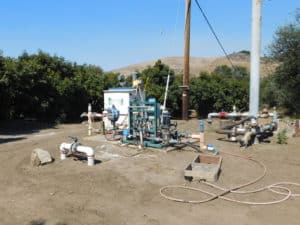
3. Surface Water
Surface water is water that is available at the surface level (no pumping is needed), and that is exposed to the elements. Surface water can be broken down in to two categories depending on the movement of the water: open flowing and non-flowing water sources.
- Open Flowing Surface Water – Examples include rivers, canals and ditches
- Non-Flowing Surface Water – Examples include ponds, reservoirs and watersheds
One common method of open flowing surface water that is used in California is river water that is supplied to growers in the Delta area. In this area, the water is mainly supplied by local rivers that supply water to the local growers in the Delta area. In the example below, the Google Map shows the Delta and the entire region that it covers (all of the blue water regions).
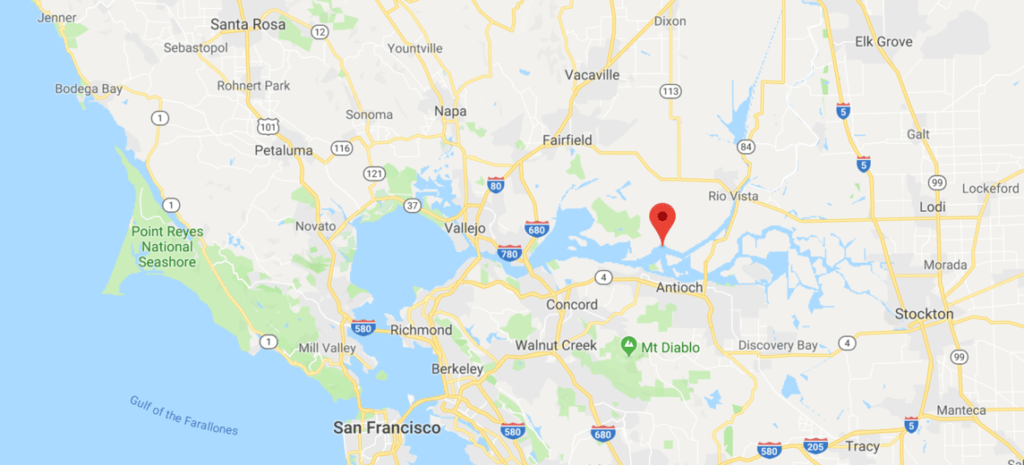
Then if you zoom in and look at it from a different perspective, you will see and entire area full of agricultural plots, and the water used there is sourced from the Sacramento River. In this specific region that I zoomed in on, you will find a lot of pear and cherry growers sourcing that water.
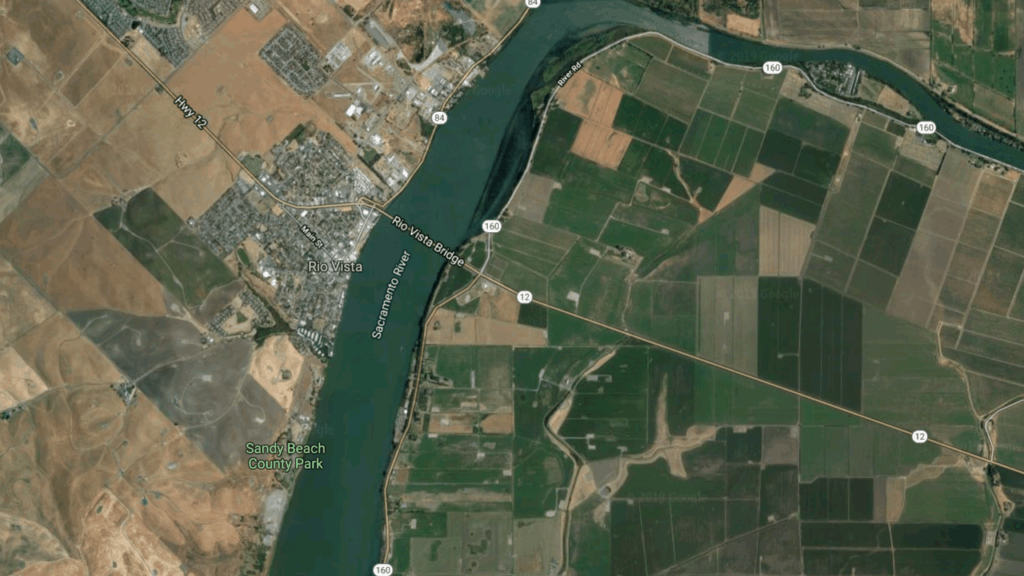
4. Reclaimed Water
Reclaimed water is waste water that has undergone a treatment process. You might have seen signs at golf courses that state that they use recycled water to water the grass. This same concept of using recycled water is also being practiced in the agricultural industry.
A common example that I have encountered is the recycled water used in the Pajaro Valley (near the Salinas region in California) that is being used to grow multiple crops. Some of the crops they advertise as being grown using this water are broccoli, cauliflower, lettuce, artichokes, strawberries, celery, etc. While researching this specific water agency, I found the video below that describes their specific process to create water that can be used in agricultural operations.
5. Tail Water
Water can be a mixture of run-off from the growing area, as well as any rain water that has accumulated. This water accumulates near the growing area, but something to worry about with this source is that any irrigation water that has become run-off can contain fertilizers or any other chemical that has been applied to the growing area. Algae growth and plant pathogens can also be a cause for concern.
Hydroponic operations also fall under this category. As is shown in the picture below, the used water can be pumped back into the growing area.
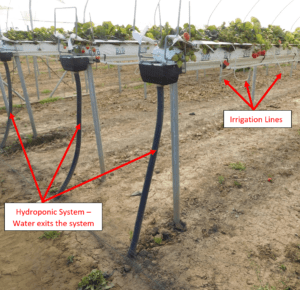
What Happens When There is Too Much Rain?
People always say “we need the rain”, and we do. But there are also issues that can arise from too much rain (and water in general), such as flooded fields for crops that do not do well under those conditions. In these cases, flooding does not go unnoticed and the affected soil and crop need to be tested and cared for properly. Any crop that was affected by flood water during the weather event should not be sold into the marketplace.
Irrigation Methods
Above, we talked about where the agricultural water comes from. The choice of irrigation method determines how that water is delivered to the crop. There are preferred methods for different types of crops based on how they are grown, the soil they are grown in, etc.
Some common methods of irrigation in agricultural operations are:
- Drip Irrigation – Where water is applied slowly through emitters to the soil surface.
- Sprinkler (Overhead) Irrigation – Where water is sprayed in the air (like a sprinkler at your house). There is a lot less control using this method because there is no guarantee where the water actually lands (e.g., soil versus crop versus edible portion of the crop versus somewhere else due to weather conditions (e.g., wind)).
- Flood/Furrow Irrigation – This is where there are furrows created in the growing area and the furrows are flooded to allow the crops to be watered that way.
- Seepage Irrigation – Where groundwater is used to irrigate, and the growers are essentially controlling the water table in areas where there is a high water table. Some examples of this can be found here and here.
How Do I Know if the Water That Was Used to Grow My Food Was Safe?
This is where food safety audits come into play. As important of a factor as water is, food safety audits do not require a lot of water tests. For a lot of crops, the growers only perform water tests once per year/season and that meets the requirement. However, there are certain crops, such as leafy greens that are grown in California and Arizona and follow the LGMA (Leafy Green Marketing Agreement) standards, where multiple water tests are required each season, and at designated time frames. During the food safety audits, auditors check to make sure the testing was done and that there were no issues with the test results (if there were, there need to be measures taken to ensure the water source was safe to continue using).
Resources
If you enjoyed this post, you might also like:

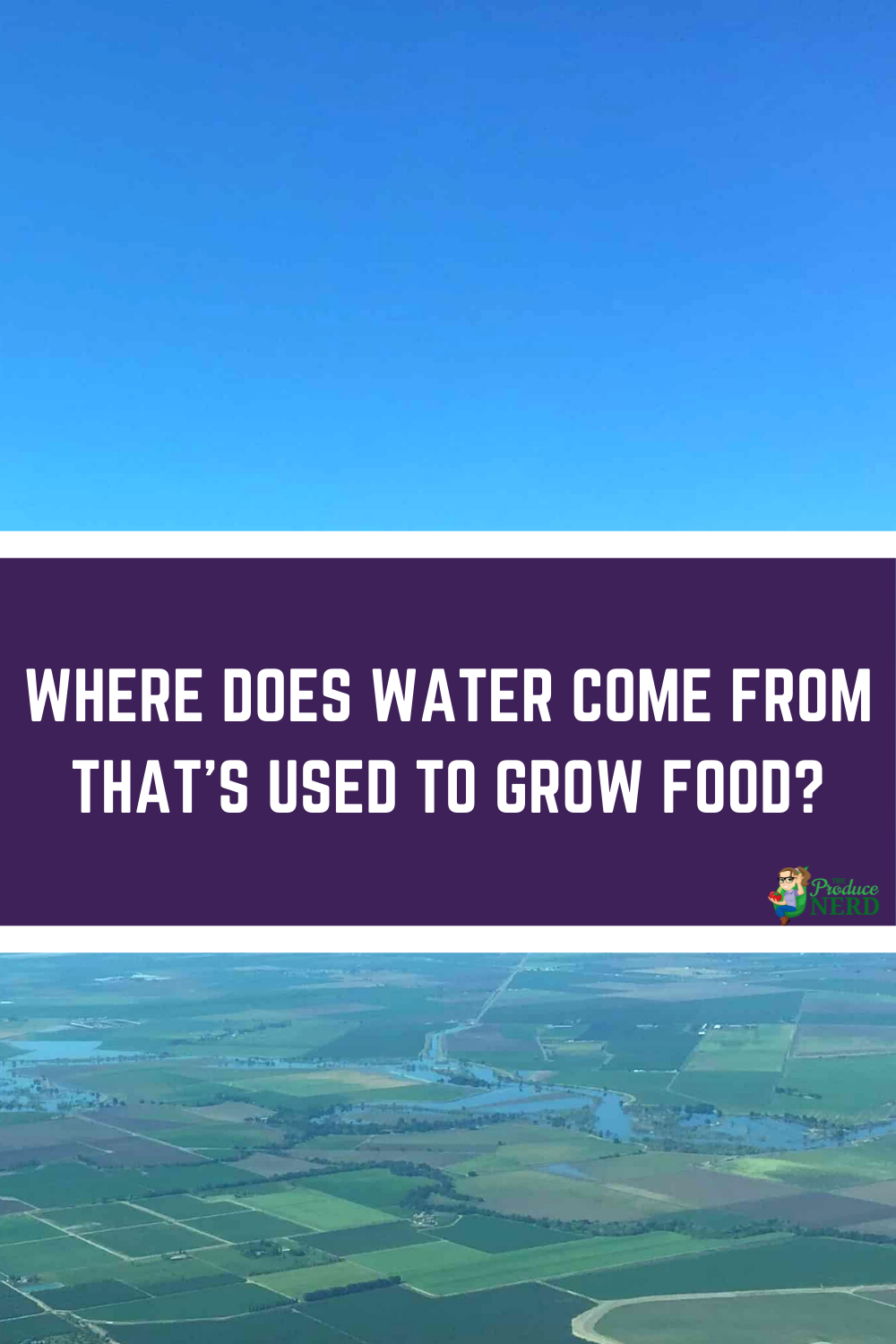
its very beneficial material for agriculture.
Hey Megan,
Very helpful piece on irrigation here which is helping me with my online irrigation course!
Thank you!
Awesome, I’m so glad!